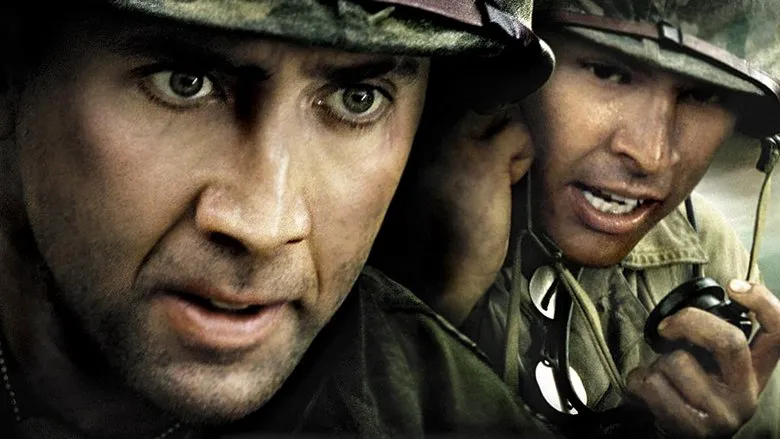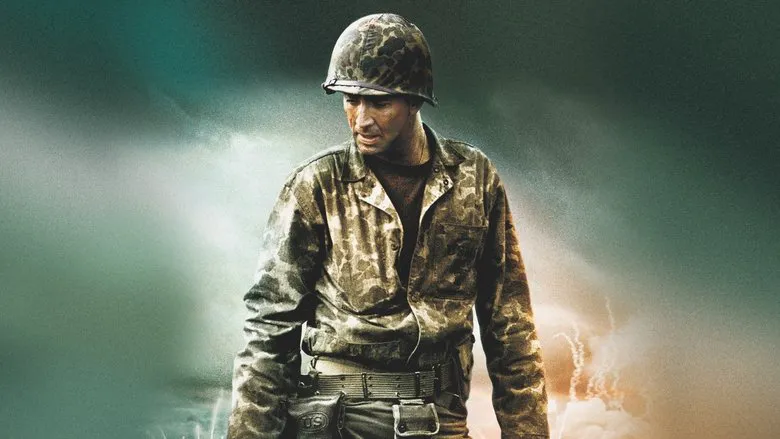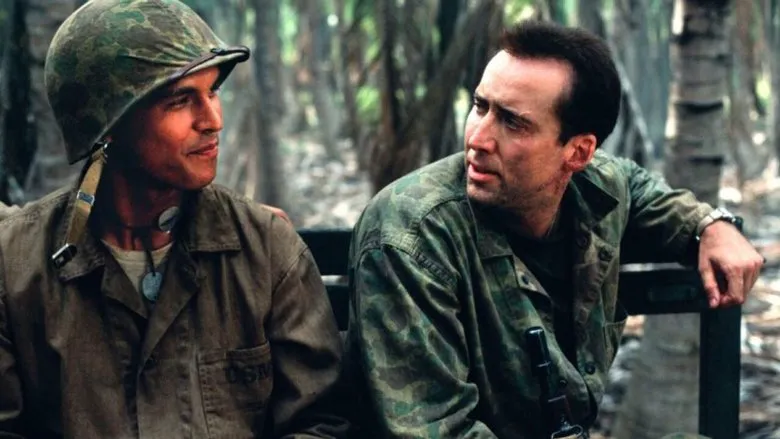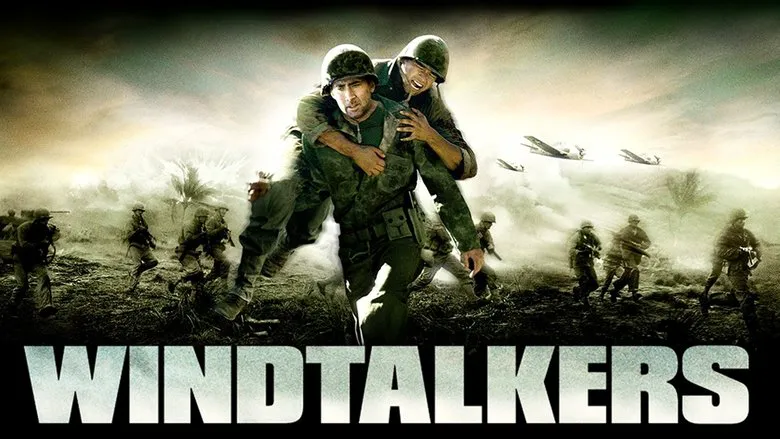A Blockbuster Without a Plot: A Review of “Windtalkers”
It’s not about minor follies, but about a blockbuster – a pompous, big-budget, mainstream project hyped from day one of filming. It’s like a prelude to the never-ending second US war with Iraq, using the US participation in World War II as an example. Except their trend is brand new (“Saving Private Ryan,” “The Thin Red Line,” and “Pearl Harbor”), while ours, thankfully, lasted for over forty years…

Honestly, watching John Woo’s (“Broken Arrow,” “Face/Off,” “Mission: Impossible 2”) work, you start thinking it would be better if Hollywood kept churning out Westerns… Now that was cinema! “Geronimo,” “She Wore a Yellow Ribbon,” “Cheyenne Autumn”… The plot of Woo’s film is revealed in the first five minutes: the fact that Native Americans also fought “for our side” in World War II. The Japanese never cracked the code developed by the Navajo tribe based on their language. It was implemented in radio communications during the Pacific War. “Windtalkers” is the password of the Native American code talkers, who were protected like the apple of an eye in those battles. However, it was also understood that it was better to kill a code talker yourself than to let him be captured by the enemy. That’s it. These three lines of content are illustrated by the battle for a certain island of Saipan, and the most agonizing thing during the two-plus hours of viewing is: how can you throw $115 million at a movie that has no plot?
The Story (or Lack Thereof)
Two Native Americans fight on Saipan with assigned bodyguards. The main bodyguard is Nicolas Cage, the secondary one is Christian Slater. Slater and his Navajo immediately find common ground, Cage not so much, because the Navajo accidentally spilled coffee on him. But they are still looking for something, because Cage always has an impenetrable, tragic expression on his face and a wounded left ear. The tragedy, apparently, is from a ruptured eardrum, the impenetrability is because there’s nothing to play.

All the problems – “ah, war, what have you done, you vile thing” and “ah, how to be loyal to a friend if you suddenly have to kill him” – are not worth a damn compared to our heroic radio operators, who always blew themselves up with grenades, especially if there were a couple of fascist bastards nearby. And when Cage and the Native American cross the front line in broad daylight to transmit a radio message to their own from an enemy trench, in full view of the enemy, because their radio transmitter was pierced by a bullet – and no one is killed, and then they safely cross back – it’s just some kind of “Heavenly Sluggard” combined with “Secretary of the Regional Committee.” In general, the old cliches of our 40s films, “Third Strikes” and “Great Turnarounds,” are observed perfectly. If “ours” are killed in the frame, say two or three hundred people, after the battle, at most a dozen or two are buried. If “ours” are surrounded, with one burst of automatic fire he will mow down a company of Japanese, and not a single Japanese will hit him. If Cage and the Native American carry young comrades with torn legs on their backs from the line of fire, they invariably have philosophical conversations: “What do you know about friendship? - I’ll show you now by personal example.”

Style Over Substance
Most disconcerting are the constant bursts of slow motion. This is John Woo’s favorite technique since “The Killer,” but who told him that soldiers, going on the attack, fall into a stupor every minute right on the battlefield and regularly survey it as if “from the side”? And the Japanese don’t specifically shoot at them then – they wait for them to come out of their stupor in order to finish them off quickly. On the other hand, what was Woo supposed to do if the film specifically consists of several local battles interspersed with lyrical nights (“Ah, what women there were in peacetime”)? The first battle is immediately after landing on the coast, the second is when American artillery keeps accidentally hitting their own, the third is in a peaceful village, the fourth is on a nameless height. All that distinguishes them is natural and landscape diversity, and by the end you’re just waiting: there was a built-up area, there was rough terrain, but there was no minefield. And here it is immediately - a minefield under a hill with wires, etc. So Woo had no choice but to bet on naturalism.

“Windtalkers” is about severed heads, disemboweled insides, and lots and lots of bullets in the chest, ass, and limbs. But if the whole interest is in this very naturalism, then it is forbidden to tell who exactly will be killed, who will be beheaded by a samurai saber, and who will be hit by a direct hit from an artillery shell. So what then to write about? What to compare with? The degree of authenticity of a fresh stump during the capture of Tipo-Pale (John Woo) and during the landing in Dunkirk (Steven Spielberg)? Excuse me, the viewer is not Sklifosovsky after all. Let’s leave, perhaps, one non-evaluative statistic, and everyone is free to imagine the angry invectives of the artistic council themselves. 700 extras and 280 explosions in one first scene, 1300 costumes for Americans, 1000 for Japanese, 500 units of antique weapons and 700 copies, including tanks, half a million cartridges, 350 members of the film crew, more than 40 stuntmen, 20 weeks of filming, a mobile restaurant for 1000 people.